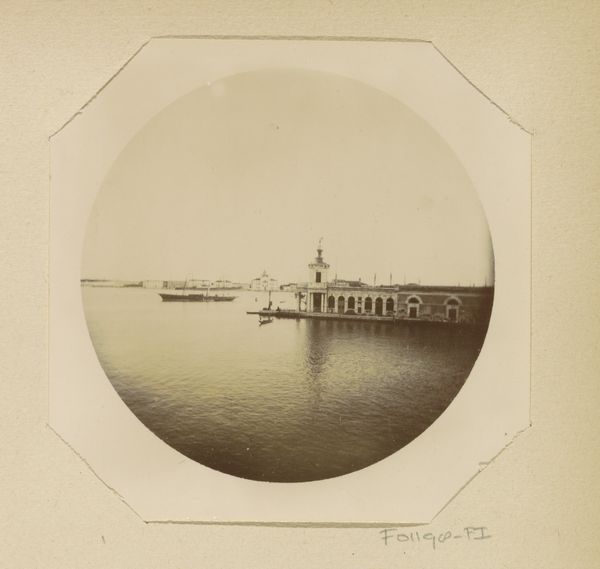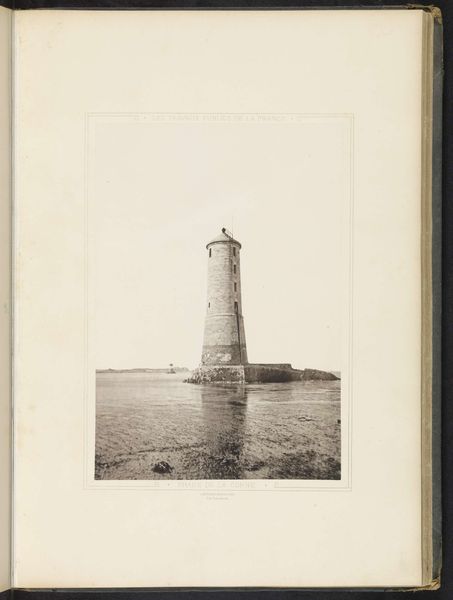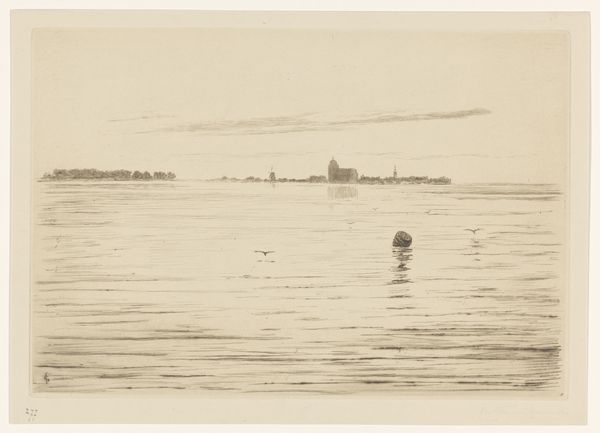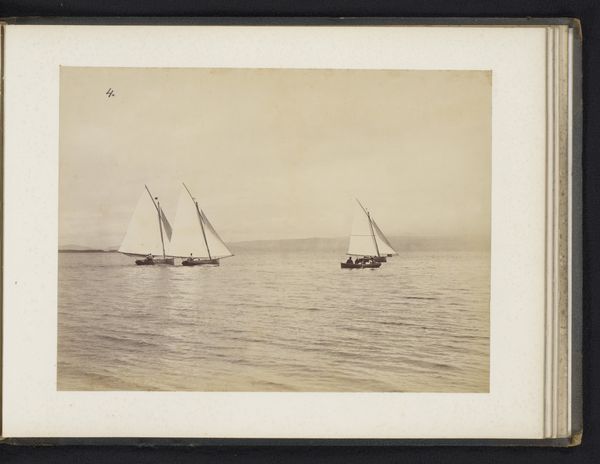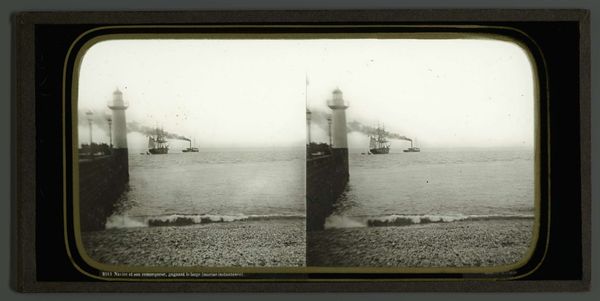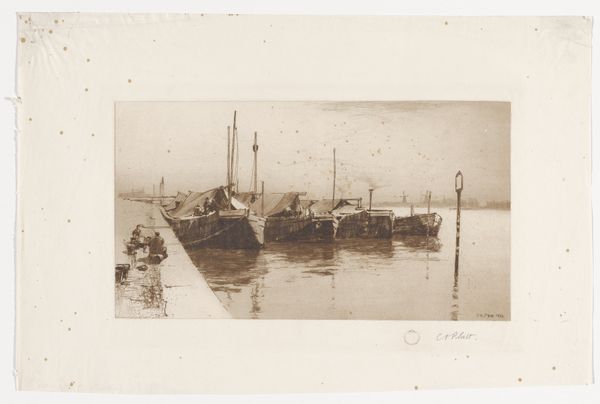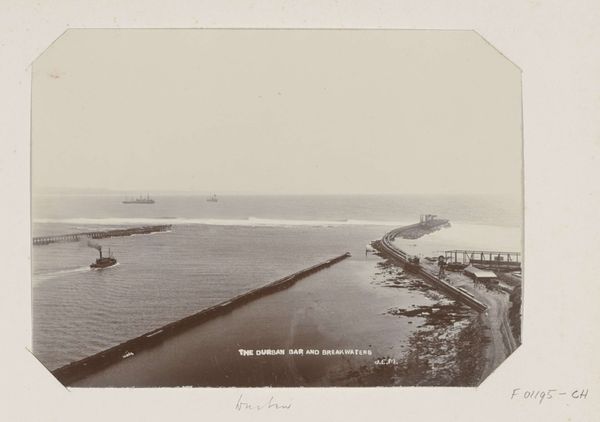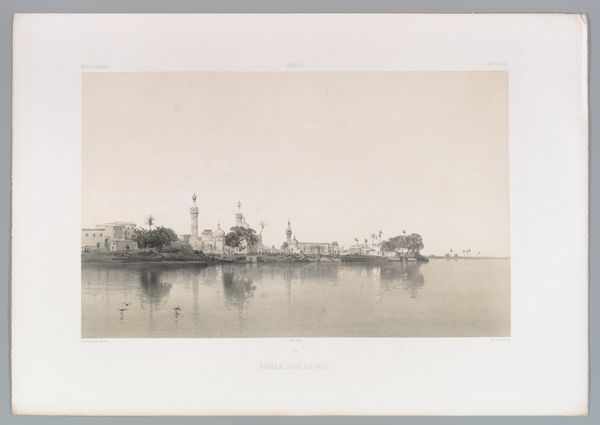
photography
#
still-life-photography
#
toned paper
#
muted colour palette
#
pictorialism
#
landscape
#
photography
#
muted colour
#
muted tone
#
watercolor
Dimensions: height 214 mm, width 280 mm
Copyright: Rijks Museum: Open Domain
Curator: Good morning. I'd like to introduce “Vuurtoren en zeilschip bij de Bittermeren,” which translates to “Lighthouse and sailing ship at the Bitter Lakes.” The photography is attributed to C. & G. Zangaki around 1885. It's currently held here at the Rijksmuseum. Editor: What strikes me immediately is the near monochrome quality. The muted sepia tones lend it a dreamlike, almost unsettling atmosphere. The composition is incredibly strong though, with that sturdy vertical lighthouse juxtaposed against the distant sailing ship. Curator: Absolutely, the choice to print on toned paper, common in pictorialist photography, softened the contrast and heightened the work’s emotional tenor. The photograph really exemplifies the movement’s embrace of photography as art, not merely a recording device. Think of how deliberately the photographer created mood and tone. Editor: And what was the prevailing social view of such romantic subject matter? Curator: By this time, documentary photography was fairly commonplace, often linked to colonialism or industry. Pictorialism, however, saw an influx of wealthier amateurs whose works focused instead on beauty and atmosphere—an escapism of sorts. There were salon exhibitions, and artistic legitimacy at stake. Editor: So a deliberate choice to create images aesthetically distinct from purely commercial photography, as well as push back against realism through manipulation. Observe, if you will, how the photographer used soft focus. The textures lack precision. What are we to make of that lighthouse then, visually? Curator: Semiotically, that light functions as the steadfast element against a backdrop of the ever-changing maritime world. Also the reflection of the lighthouse adds a sense of doubling. Its repetition is an anchoring pattern, an indication of constant reliability amidst change. It functions through those formal relations. Editor: In considering those symbolic layers, though, think of it not only as light but also control; that signal would control traffic in the region for both commercial as well as private endeavours, if the site was important to commercial enterprise as it likely was in 1885. The aesthetic also reflects social attitudes of authority. Curator: It really holds within itself tensions that can be unlocked with close looking. What else might one observe about those formal elements? Editor: What remains potent in “Vuurtoren en zeilschip bij de Bittermeren” are indeed those contrasts; stillness against implied movement and the familiar against what could be seen as exotic through the shipping industry. It captures the eye across these decades, nonetheless. Curator: Absolutely, its enduring appeal stems from the harmony found amidst seemingly contradictory concepts. The technique and artistry that go into such a relatively small artwork make this particular work extremely important.
Comments
No comments
Be the first to comment and join the conversation on the ultimate creative platform.

